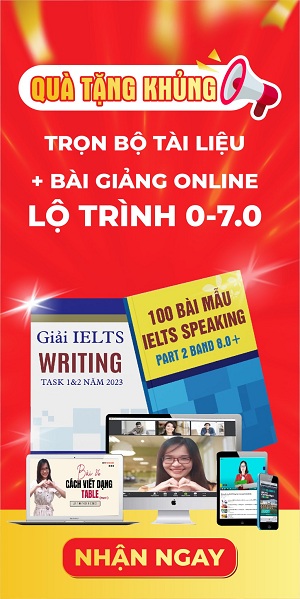Cam 16 Test 2 Writing Task 1
Summarise the information by selecting and reporting the main features, and make comparisons where relevant.
Write at least 150 words.
How sugar is produced from sugar cane

Bài mẫu tham khảo
Bài mẫu tham khảo số 1:
The image illustrates the process by which sugar is produced from sugar cane.
In total, the production of sugar from sugar cane involves seven steps, beginning with the cultivation of sugar cane and ending with the refined sugar ready for sale.
During the initial step, sugar cane is planted and nurtured for 12 to 18 months, after which the stalks are harvested. Harvesting is carried out either by a specialized machine called a reaper or manually using a sickle. Following this, a crusher with large rollers presses the sugar cane juice out of the shredded stalks, after which the juice is refined using a limestone filter. The subsequent step involves evaporation, during which the resulting juice is heated to thicken into syrup.
The sixth step in the sugar-producing process is crystallization: the crystals are spun in a centrifuge to remove the liquid and produce raw sugar. Finally, the sugar is dried and cooled before being packed and shipped to grocery stores or other consumption sites.
Written by IELTS Thanh Loan
1. Illustrates
- Vietnamese: Minh họa
- English: Describes or shows something in detail.
2. Cultivation
- Vietnamese: Trồng trọt
- English: The process of preparing and working on land to grow crops.
3. Nurtured
- Vietnamese: Chăm sóc
- English: Carefully looked after or cultivated.
4. Harvesting
- Vietnamese: Thu hoạch
- English: The process of gathering a crop when it is mature.
5. Specialized machine
- Vietnamese: Máy móc chuyên dụng
- English: A piece of equipment designed for a specific purpose or task.
6. Crusher
- Vietnamese: Máy nghiền
- English: A machine used to crush or press something into smaller pieces.
7. Refined
- Vietnamese: Tinh chế
- English: Purified or processed to improve quality.
8. Evaporation
- Vietnamese: Sự bay hơi
- English: The process of a liquid turning into vapor or gas.
9. Crystallization
- Vietnamese: Quá trình kết tinh
- English: The formation of crystals from a solution or liquid.
10. Centrifuge
- Vietnamese: Máy ly tâm
- English: A device that rotates rapidly to separate substances of different densities.
11. Consumption
- Vietnamese: Sự tiêu thụ
- English: The act of using or consuming something, especially food or drink.
Bạn đang chuẩn bị cho kì thi IELTS?
Học IELTS Online qua ZOOM, bức band thần tốc
IELTS Thanh Loan – giáo viên 10 năm kinh nghiệm – trực tiếp đứng lớp, tự tin mang đến khóa học chất lượng nhất, phương pháp giảng dạy cô đọng dễ hiểu, giáo trình tự biên soạn cho lộ trình từ cơ bản đến luyện đề chuyên sâu. Đặc biệt, học viên luôn được quan tâm sát sao nhất, hỗ trợ không giới hạn, thúc đẩy kỷ luật học tập tốt để đạt mục tiêu.

Bài mẫu tham khảo số 2:
The process shows how sugar is made from the sugar cane plant.
Looking from an overall perspective, it is readily apparent that this natural and man-made process involves 3 main stages beginning with initial harvesting, followed by a chemical transformation, and finally separation into the end product of sugar.
The first stage is natural and begins with sugar cane being grown over a 12 – 18 month period. The mature plant is then harvested either by hand or large, industrial farming machinery. From that point, the stalks are crushed in a grinder which results in raw sugar cane juice.
The juice is then run through a limestone filter and poured into an evaporator during which time it is heated, reduced and becomes a syrup. The syrup is next separated from the sugar crystals using a centrifuge prior to being dried and cooled in its final form as sugar.
Written by howtodoielts.com
Từ vựng hay
1. Perspective
- Vietnamese: Quan điểm
- English: A particular way of regarding something; a point of view.
2. Readily apparent
- Vietnamese: Rõ ràng, dễ thấy
- English: Clearly visible or obvious.
3. Chemical transformation
- Vietnamese: Sự biến đổi hóa học
- English: The process of changing the chemical composition of a substance.
4. Industrial farming machinery
- Vietnamese: Máy móc nông nghiệp công nghiệp
- English: Large-scale agricultural equipment used in farming operations.
5. Grinder
- Vietnamese: Máy nghiền
- English: A machine used to crush or pulverize something into smaller particles.
6. Raw
- Vietnamese: Nguyên liệu, thô
- English: In its natural or unprocessed state.
7. Limestone filter
- Vietnamese: Bộ lọc đá vôi
- English: A filter made from limestone, a type of sedimentary rock, used to purify liquids.
8. Evaporator
- Vietnamese: Máy bay hơi
- English: A device used to evaporate a liquid, typically by heating.
9. Centrifuge
- Vietnamese: Máy ly tâm
- English: A machine that separates substances of different densities by spinning them at high speeds.
10. Final form
- Vietnamese: Hình dạng cuối cùng
- English: The ultimate or concluding shape or state of something.
Lược dịch
Bài mẫu tham khảo số 1:
Hình ảnh mô tả quá trình sản xuất đường từ mía.
Nhìn chung, sản xuất đường từ mía cần tổng cộng bảy bước, bắt đầu từ việc trồng mía và kết thúc với đường sẵn sàng để bán
Bước đầu, mía được trồng và chăm sóc từ 12 đến 18 tháng, sau đó thu hoạch than cây. Quá trình thu hoạch được thực hiện bằng máy chuyên dụng gọi là máy gặt hoặc thủ công bằng liềm. Tiếp theo đó, một máy nghiền có các trục lăn lớn sẽ ép nước mía ra khỏi thân cây vụn, và sau đó, nước ép này được tinh chế bằng bộ lọc đá vôi. Bước tiếp theo là làm bay hơi, trong đó nước ép thu được được đốt cháy dưới nhiệt cô đặc thành xi-rô.
Bước thứ sáu của quá trình sản xuất đường là kết tinh: các tinh thể được quay trong máy ly tâm để loại bỏ chất lỏng và tạo ra đường thô. Cuối cùng, đường được sấy khô và làm nguội, sau đó được đóng gói và vận chuyển đến các cửa hàng tạp hóa hoặc các điểm tiêu thụ khác.
Bài mẫu tham khảo số 2:
Quá trình này cho thấy đường được tạo ra từ cây mía như thế nào.
Nhìn từ góc độ tổng thể, có thể thấy rõ rằng quy trình tự nhiên và nhân tạo này bao gồm 3 giai đoạn chính bắt đầu từ thu hoạch ban đầu, tiếp theo là chuyển hóa hóa học, và cuối cùng là tách thành sản phẩm cuối cùng là đường.
Giai đoạn đầu tiên là tự nhiên và bắt đầu bằng việc trồng mía trong thời gian 12-18 tháng. Cây trưởng thành sau đó được thu hoạch bằng tay hoặc máy móc nông nghiệp công nghiệp lớn. Từ đó, thân cây được nghiền trong máy xay để tạo ra nước mía thô.
Sau đó, nước trái cây được chạy qua một bộ lọc đá vôi và được đổ vào một thiết bị bay hơi trong thời gian đó nó được làm nóng, khử và trở thành xi-rô. Tiếp theo, xi-rô được tách khỏi các tinh thể đường bằng máy ly tâm trước khi được làm khô và làm lạnh ở dạng cuối cùng là đường.
[stu alias=”khoa_truy_cap_cac_bai_giai_de”]Xem thêm:
- Bài mẫu Writing Task 1 & 2 Cam 16 Test 1
- Bài mẫu Writing Task 1 & 2 Cam 16 Test 2
- Bài mẫu Writing Task 1 & 2 Cam 16 Test 3
- Bài mẫu Writing Task 1 & 2 Cam 16 Test 4
Đừng bỏ qua những cuốn sách cực hữu ích:
Cam 16 Test 2 Writing Task 2
In their advertising, businesses nowadays usually emphasise that their products are new in some way.
Why is this? Do you think it is a positive or negative development?
Give reasons for your answer and include any relevant examples from your own knowledge or experience.
Phân tích câu hỏi
Dạng câu hỏi: Two-part question
Cấu trúc bài viết:
Introduction:
- Giới thiệu chủ đề
- Trả lời cả hai câu hỏi
Body 1: Giải thích lý do tại sao các doanh nghiệp khi quảng cáo lại nhấn mạnh đến những điều mới lạ của sản phẩm
- Để trở nên khác biệt hơn so với các sản phẩm cạnh tranh, từ đó thuyết phục người mua hàng
- Bản năng của người mua hàng là bị thu hút bởi những thứ mới
Body 2: Đưa ra ảnh hưởng tích cực/ tiêu cực của xu hướng này
- Tích cực là người mua có thể so sánh những đặc tính nổi bật nhất của sản phẩm và so sánh, từ đó lựa chọn sản phẩm phù hợp với nhu cầu của mình nhất
- Tiêu cực là đôi khi khiến khách hàng chạy theo xu hướng, mua sắm quá nhiều và không thật sự cần
Conclusion:
- Tóm tắt lại câu trả lời
Bài mẫu tham khảo
Companies frequently promote their products by emphasizing their innovative features. This practice is essential as product differentiation plays a pivotal role in persuading consumers to make purchases. Moreover, this trend fosters consumer awareness and empowerment.
The primary objective of advertisements showcasing product innovations is to sway consumers into buying the featured items. By highlighting the unique attributes of a product, advertisers aim to persuade consumers that it surpasses its competitors. For example, whenever Apple unveils a new iteration of the iPhone, its distinctive features are meticulously presented to potential buyers. This underscores the value proposition of upgrading to the latest Apple product, thereby increasing the likelihood of a purchase.
This phenomenon is highly advantageous for consumers as it equips them with valuable knowledge, enabling them to make informed purchasing decisions. Armed with information about a product’s distinctive features, discerning consumers can conduct thorough comparisons and select the product that best suits their individual needs. For instance, I opted to purchase an iPhone 12 because I discovered that it boasts the highest camera resolution among all smartphones currently available. As an amateur photographer, this feature ensures that I can capture high-quality photos with my phone, making the investment worthwhile despite its premium price.
In conclusion, companies strategically advertise the innovative features of their products to entice consumers to make purchases. This serves as a constructive trend, empowering consumers to make informed choices and ultimately enhancing their overall shopping experience.
Tự học IELTS tại nhà chỉ từ 1.2 triệu?
Bằng Khóa học IELTS Online dạng video bài giảng
Giải pháp tự học IELTS tại nhà, tiết kiệm chi phí, linh hoạt thời gian nhưng đảm bảo hiệu quả. Khóa học dạng video bài giảng có lộ trình học từng ngày chi tiết. Học viên học lý thuyết qua video bài giảng, thực hành Listening Reading trực tiếp trên website, còn Writing Speaking được chấm chữa trực tiếp bởi cô Thanh Loan. Mọi bài giảng đều có tài liệu học tập đi kèm.

Từ vựng
1. Emphasizing
- Vietnamese: Nhấn mạnh
- English: Giving special importance or attention to something.
2. Innovative features
- Vietnamese: Tính năng đổi mới
- English: Characteristics or aspects of a product that are new, original, or inventive.
3. Product differentiation
- Vietnamese: Phân biệt sản phẩm
- English: The process of making a product appear distinct from others in the market.
4. Pivotal role
- Vietnamese: Vai trò then chốt
- English: A crucial or central function or significance.
5. Persuading
- Vietnamese: Thuyết phục
- English: Convincing someone to do or believe something through reasoning or argument.
6. Consumer awareness
- Vietnamese: Nhận thức của người tiêu dùng
- English: Understanding by consumers of their rights and responsibilities regarding products and services.
7. Empowerment
- Vietnamese: Sự bổ nhiệm quyền lực
- English: The process of giving individuals or groups the authority, power, or confidence to do something.
8. Attribute
- Vietnamese: Thuộc tính
- English: A quality or characteristic of a person or thing.
9. Value proposition
- Vietnamese: Đề xuất giá trị
- English: The unique benefits or advantages offered by a product or service to its customers.
10. Meticulously
- Vietnamese: Cẩn thận, tỉ mỉ
- English: With great attention to detail; carefully and precisely.
11. Discerning
- Vietnamese: Sáng suốt, sắc bén
- English: Having or showing good judgment or understanding.
12. Thorough comparisons
- Vietnamese: So sánh kỹ lưỡng
- English: Detailed assessments or examinations of different products or options
Dịch tiếng Việt
Công ty thường quảng cáo sản phẩm của họ bằng cách nhấn mạnh vào các tính năng đổi mới. Thực tế, việc này là quan trọng vì phân biệt sản phẩm thường đóng vai trò then chốt trong việc thuyết phục người tiêu dùng mua hàng. Hơn nữa, xu hướng này thúc đẩy nhận thức và quyền lực của người tiêu dùng.
Mục tiêu chính của quảng cáo nhấn mạnh các tính năng đổi mới của sản phẩm là thuyết phục người tiêu dùng mua các sản phẩm được giới thiệu. Bằng cách tôn trọng những thuộc tính độc đáo của một sản phẩm, nhà quảng cáo nhằm thuyết phục người tiêu dùng rằng sản phẩm đó vượt trội so với các sản phẩm cạnh tranh. Ví dụ, mỗi khi Apple giới thiệu một phiên bản mới của iPhone, các tính năng đặc biệt của nó được trình bày tỉ mỉ trước các khách hàng tiềm năng. Điều này nhấn mạnh đề xuất giá trị của việc nâng cấp lên phiên bản mới nhất của sản phẩm Apple, từ đó tăng cơ hội mua hàng.
Hiện tượng này rất có lợi cho người tiêu dùng vì nó trang bị cho họ kiến thức quý báu, giúp họ có thể đưa ra quyết định mua hàng có hiểu biết. Với thông tin về các tính năng độc đáo của một sản phẩm, người tiêu dùng có thể tiến hành so sánh kỹ lưỡng và chọn sản phẩm phù hợp nhất với nhu cầu cá nhân của họ. Ví dụ, tôi đã quyết định mua một chiếc iPhone 12 vì tôi phát hiện ra rằng nó có độ phân giải camera cao nhất so với tất cả các điện thoại thông minh hiện có. Với tư cách là một nhiếp ảnh gia tập sự, tính năng này đảm bảo rằng tôi có thể chụp ảnh chất lượng cao bằng điện thoại của mình, và tính năng này đáng giá với tôi mặc dù giá cả cao.
Tóm lại, các công ty chọn cách quảng cáo các tính năng mới của sản phẩm của họ như một cách thuyết phục người mua hàng. Điều này là một xu hướng cực kỳ tích cực vì nó dẫn đến người tiêu dùng có thông tin đầy đủ hơn và đưa ra quyết định mua hàng tốt hơn.
[/stu]Mời bạn cùng tham gia cộng đồng “Học IELTS 0đ” trên Zalo cùng IELTS Thanh Loan, nhận những video bài giảng, tài liệu, dự đoán đề thi IELTS miễn phí và cập nhật













